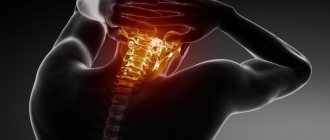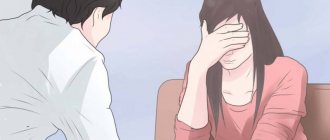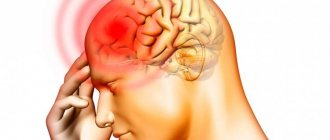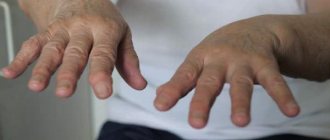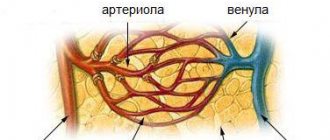Migraine with aura , also called classic, associated migraine or hemicrania with aura, is a chronic hereditary neurological pathology. The disease is characterized by the periodic occurrence of attacks of pulsating headaches (TH) of a vascular nature. The average duration of a migraine attack with aura ranges from 4 hours to 3 days . The pain attack in most cases occurs on one half of the head and is localized in the orbital-frontotemporal region. A distinctive feature of associated migraine from the simple form of hemicrania is the development of focal neurological symptoms before an attack of cephalgia.
Causes and mechanisms of development of migraine with aura
Although the first data on migraine with aura were recorded by the ancient Egyptians, a single cause of the disease has not yet been established and the mechanism of development of the disease has not been fully studied. Academic minds have proposed several different hypotheses about the nature of hemicrania, among which the following versions are the most reliable and verified:
- genetic predisposition;
- autoimmune processes;
- hormonal imbalances;
- trigeminal-vascular theory;
- Wolf's vascular theory;
- platelet hypothesis;
- theory of incipient depression.
To date, provoking factors that trigger the development of a migraine attack have been identified. Let us list the main causes of migraine with aura.
External factors
- weather and climate change;
- moving to a different time zone;
- intense odors: perfumes, household chemicals, paints and varnishes, car exhaust, tobacco smoke;
- bright daylight;
- flickering of the television screen, glare of the computer monitor;
- monotonous noise or loud sounds;
- vestibular stimuli (for example: driving a car).
Psychogenic factors
- stressful state;
- lack of sleep or excess sleep;
- mental fatigue;
- non-compliance with the work and rest schedule;
- inability to relax.
Food
- canned meat products;
- products containing tyramine (chocolate);
- citrus crops;
- legumes;
- hard cheeses;
- dried fruits and nuts;
- coffee, tea, carbonated energy drinks;
- low-strength alcoholic drinks;
- some seafood.
General condition of the body
- taking contraceptives;
- period of hormonal changes in the body;
- dehydration of the body;
- decreased blood glucose levels;
- failure of serotonin metabolism.
Types of neurological defects
An aura is a set of focal neurological disorders of a regressive nature that necessarily appear before a cephalgic attack. The clinical picture of the disorder is directly dependent on the location of the pathological focus. The following types of defects are distinguished.
- Visual disturbances are the most common symptoms of migraine with aura, observed in 90% of patients. Visual disturbances appear in the form of moving dots, moving zigzags, flickering contours, flashing lightning. “Alice syndrome” is often recorded: distortion of the size and shape of objects, blurred contours, changes in the color of objects. There may be an irrational fear of loss of vision: a feeling of a veil before the eyes, fogginess and blurriness of perceived pictures.
- Sensory disorders - paresthesia - are observed with a hemiparesthetic type of aura. The patient complains of the appearance of unpleasant tactile sensations: tingling, burning, numbness, “crawling goosebumps.” Paresthesia occurs on the upper limb and reaches areas of the face.
- Vestibular disorders indicate a hemiparetic type of aura. This form is characterized by the development of motor disorders on one half of the body; most often, incomplete reversible paralysis is observed.
- Speech disorders , called dysphasia, are manifested by the fact that it is very difficult for a person to find the necessary words and compose a coherent, logically connected speech structure. Some patients describe that they temporarily lose the ability to recognize previously familiar symbols - letters and numbers.
- A mixed type of aura implies the simultaneous development of various neurological disorders.
It is worth considering that the aura appears on the side opposite to the one on which the pain syndrome will subsequently develop. The duration of neurological disorders is varied: from 20 to 60 minutes.
Clinical features (course options) of migraine with aura
Hemicrania with aura is also differentiated depending on the variants of the course of migraine attacks. The following clinical forms are described:
| View | Features and symptoms |
| Familial hemiplegic | Found among close relatives. It manifests itself as severe muscle weakness, impaired speech function, and changes in tactile sensitivity in the extremities. |
| Basilar | It is characterized by decreased visual acuity, confusion, a feeling of ringing and noise in the ears, severe dizziness, and inability to maintain balance. |
| "Decapitated" migraine | The appearance of an aura is not followed by an attack of cephalgia. |
| Retinal | Manifested by the development of reversible blindness in one or both eyes. |
| Ophthalmic | The patient demonstrates a variety of oculomotor disorders, including: doubling of objects, dilated pupils, drooping of the upper eyelid. |
| Vegetative | Symptoms of sympathoadrenal crisis develop rapidly. |
| Abdominal | The patient complains of throbbing pain in the abdominal area and the development of diarrhea. |
| Dysphrenic | During a migraine attack, confusion and disorientation in space develop. Various cognitive defects appear, and hallucinations occur. |
Diagnostics
To make a correct diagnosis, it is important to know the following signs of the disease:
- the person must have had at least 5 severe attacks;
- it must last at least 4 hours;
- there is vomiting or nausea;
- the pain is localized in one part of the head;
- There is a pulsation that only increases.
If a person is diagnosed with migraine, it is also necessary to carry out a number of diagnostic measures in order to exclude more serious pathologies and causes of pain:
- undergo a fundus examination;
- conduct encephalography of blood vessels;
- MRI;
- Ultrasound of the head and cervical spine.
Stages of a migraine attack
The clinical picture of the classic form of migraine is represented by five successively changing stages - attack phases.
First phase. The appearance of prodromal symptoms
The signs of the initial stage are determined differently in patients: from several days to two hours before an attack of hemicrania. The person complains of a sudden deterioration in mood, the appearance of causeless irritability and excessive nervousness. The person notes that it is difficult for him to fall asleep in the evening, and during the daytime he is overcome by drowsiness. Eating behavior changes: appetite may increase or disappear completely. Intolerance to environmental factors is demonstrated: bright lighting, loud sounds, monotonous noises, rich aromas. In a certain category of people, a migraine attack with aura passes without going through the initial stage.
Second phase. Aura development
The appearance of an aura can immediately follow the prodromal phase or after a short period of time (on average, the interval between stages is about one hour).
Third phase. Stage of pain syndrome
This stage reflects the main symptom of migraine – the development of pain. Painful sensations increase their intensity gradually and overcome the patient from 2 to 72 hours.
Fourth phase. Permissive stage
Signifies a gradual weakening of the pain attack. Cephalgia in some patients goes away on its own, but most patients require pharmacological agents to relieve pain. Often, after the cessation of painful sensations, a person falls asleep in a sound, peaceful sleep.
Fifth phase. Recovery period
In the final stage, the patient notices an increased urge to urinate with a concomitant increase in the volume of fluid released. Some people experience insatiable hunger with a significant increase in appetite and increased food intake. Some patients complain about the development of an asthenic state, while others, on the contrary, feel a surge of strength.
Prevention
Since migraine is a chronic disease, there are no specific prevention methods to prevent attacks.
It is important to eliminate factors that can provoke them:
- stop smoking;
- spend more time in the fresh air;
- take daily walks;
- for preventive purposes, take medications prescribed by a doctor for up to 6 months;
- avoid stress and mental stress;
- avoid factors that provoke attacks.
The disease cannot be treated . The patient’s task is to reduce attacks to a minimum. Therefore, it is important to visit a doctor if there are complaints of headaches to diagnose and prescribe appropriate treatment.
Migraine with aura: principles of treatment
In clinical practice, the choice of drug treatment for migraine with aura occurs in accordance with the criteria described in the MIDAS (Migraine Disability Assessment Scale). This taxonomy classifies the neurological disease into four degrees based on how much migraine cephalalgia affects habitual activities in various areas of life. This scale identifies the following degrees of migraine with aura:
- Degree I – mild severity of cephalalgia, no restrictions in everyday life.
- Degree II – headache of moderate intensity, the presence of minor restrictions in usual activities.
- Degree III – clearly defined intense pain syndrome with significant limitations in activity.
- Degree IV – excessively strong, intolerable cephalalgia, causing a number of significant obstacles in all areas of life.
How to treat migraine? Depending on the degree of intensity of migraine cephalalgia, the neurologist selects a drug treatment program, guided by the principle: from the simplest and gentlest medications to the most powerful and potent drugs.
Attention! The information below is for reference only and does not constitute a guide to the treatment of classic migraine. In each specific case, the pharmacological treatment regimen is selected by the doctor after conducting a thorough diagnostic examination, studying the patient’s medical history, taking into account potential risks and side effects from taking medications.
For mild attacks of hemicrania, it is recommended to take migraine medications - analgesics and non-steroidal anti-inflammatory drugs, such as Analginum and Ibuprofen. For severe attacks, powerful combined analgesics are used, for example: Solpadein.
With moderate severity of cephalgic syndrome, it is advisable to use selective serotonin agonists - triptan tablets for migraine, for example: zolmigren. For diseases of III and IV degrees of severity, more potent migraine medications are used - drugs from the triptan group, for example: Naratriptan. To relieve a severe pain attack in the absence of effect from non-narcotic analgesics, the opioid drug Zaldiar may be prescribed.
How to relieve a severe migraine? For chronic intractable pain in an inpatient department, therapy is carried out according to the following scheme:
- glucocorticosteroids, for example: prednisolone (Prednisolone);
- alpha-blockers, for example: ergotamine;
- antipsychotics, for example: Cerucal;
- tranquilizers, for example: diazepam.
To eliminate nausea and prevent the development of vomiting, antiemetics for migraines are used, for example: metoclopramidum. To prevent migraines, beta-blockers, for example: Obsidan, can be prescribed as a prophylactic agent. In the chronic course of the disease, it is advisable to carry out a course of treatment with antidepressants, for example: efevelon.
How to relieve pain without medications?
In addition to medications, other methods of treating the disease are also used. These are acupuncture, breathing exercises, auto-training, aromatherapy, acupuncture.
If an attack occurs, but there are no medications at hand, it is important not to let it unfold. To do this, you need to go to bed, close the curtains, remove unnecessary sounds and apply a cold compress to the location of the headache.
You can drink a glass of blackcurrant juice or green tea . Zvezdochka balm helps, which is recommended to rub on your temples. To relieve an attack, it is recommended to drink decoctions of the following herbs: lemon balm, peppermint, St. John's wort, oregano.

